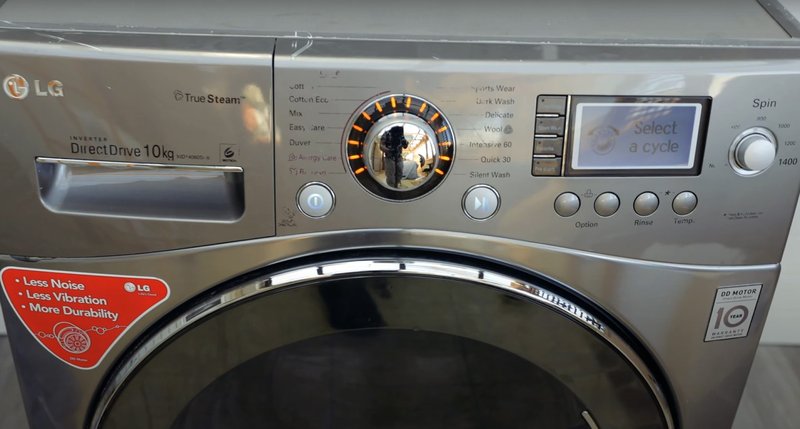
An error code on your dryer can feel a bit like a mysterious message from a foreign language. The OE error code, for instance, indicates a problem with the dryer’s draining system. Simply put, *OE* stands for “Overflow Error,” which means your dryer is having trouble draining water properly. Imagine a clogged sink where the water doesn’t go down the drain smoothly. Similarly, your dryer might be facing a blockage or malfunction that’s preventing it from getting rid of excess water. Before panic sets in, let’s explore what could be causing this and when it’s time to seek professional help.
Understanding the OE Error Code
At its core, the OE error code is all about drainage issues. Your LG dryer is designed to ensure clothes are thoroughly dried, but when it throws up this error, it’s indicating a hiccup in the system that’s supposed to remove water during the drying cycle. Picture this: if your dryer can’t rid itself of water, it’s like trying to dry clothes in a puddle—not very effective, right?
There are several components in your dryer responsible for managing water flow, such as the drain pump, hoses, and filters. If any of these are blocked, clogged, or malfunctioning, they can trigger the OE code. For instance, a dryer drain hose might be kinked or blocked by lint, making it difficult for water to pass through. Similarly, if the drain pump is on the fritz, it won’t be able to perform its job of expelling water efficiently.
You might feel inclined to tackle this issue on your own, but understanding these internal mechanisms can be as perplexing as deciphering the inner workings of a clock. Therefore, knowing when a problem is beyond basic troubleshooting is crucial to prevent further complications. If you’re uncertain about what’s causing the error after a preliminary check, it might be time to call in a technician.
When Can You Fix It Yourself?
Not every OE error necessitates an immediate call to a technician. Some issues can be resolved with a little DIY elbow grease. Start by checking for any obvious blockages in the drain hose and filter. Much like cleaning out a blocked straw, sometimes clearing away a bit of lint or debris is all it takes. Unplug your dryer, detach the hose, and inspect it for kinks or obstructions. If you spot any, carefully remove them and reattach the hose securely.
Similarly, the filter could be clogged with lint or residue from your laundry. Give it a thorough clean in warm, soapy water, and ensure it’s completely dry before placing it back in the machine. It’s a bit like cleaning out the lint trap on your dryer vent, only this time, you’re dealing with water instead of air.
However, here’s the kicker: if you’ve gone through these steps and the error persists, it’s a red flag that the problem might be more serious. Just like you wouldn’t keep driving a car with the check engine light on, continuing to use a malfunctioning dryer could lead to more significant damage.
When Should You Call a Technician?
Now, if you’ve tried the easy fixes and that pesky OE code is still haunting your dryer’s display like an unwelcome ghost, it’s time to consider professional assistance. This is especially true if you suspect the issue lies within the drain pump or internal wiring—components that require technical expertise akin to surgery on a complex machine.
A trained technician can diagnose whether the pump needs repair or replacement, preventing further damage to your dryer. They have the tools and know-how, much like a detective with a magnifying glass, to pinpoint problems that are not visible or accessible to the average person. Additionally, if your dryer is under warranty, messing with internal parts without proper knowledge could void that valuable safety net.
Think of calling a technician as an investment in peace of mind. Not only will they provide you with a clear diagnosis, but they can often fix the issue swiftly, allowing you to get back to your laundry routine without unnecessary stress or fear of additional costs down the line.
Preventing Future OE Errors
While it’s important to know when to call a professional, it’s equally vital to understand how to prevent these errors from cropping up in the first place. Regular maintenance can help keep your dryer running smoothly, much like routine check-ups with a doctor keep you healthy.
Firstly, make a habit of cleaning the lint filter after every use. This keeps airflow unimpeded, reducing the risk of clogs. Additionally, periodically inspect and clean your dryer’s drain hose and filter—perhaps set a reminder every few months to ensure they remain clear and functional.
Finally, ensure that your dryer is level and not overloaded. An unbalanced machine or one stuffed beyond capacity can strain the components, leading to those dreaded error codes. By taking these preventative measures, you can extend the life of your dryer and avoid unnecessary calls to the technician.
With this knowledge in your back pocket, you’re now equipped to handle the OE error code with confidence and, when necessary, with professional help. Keep your dryer in good shape, and it’ll keep your clothes fresh and dry without a hitch.